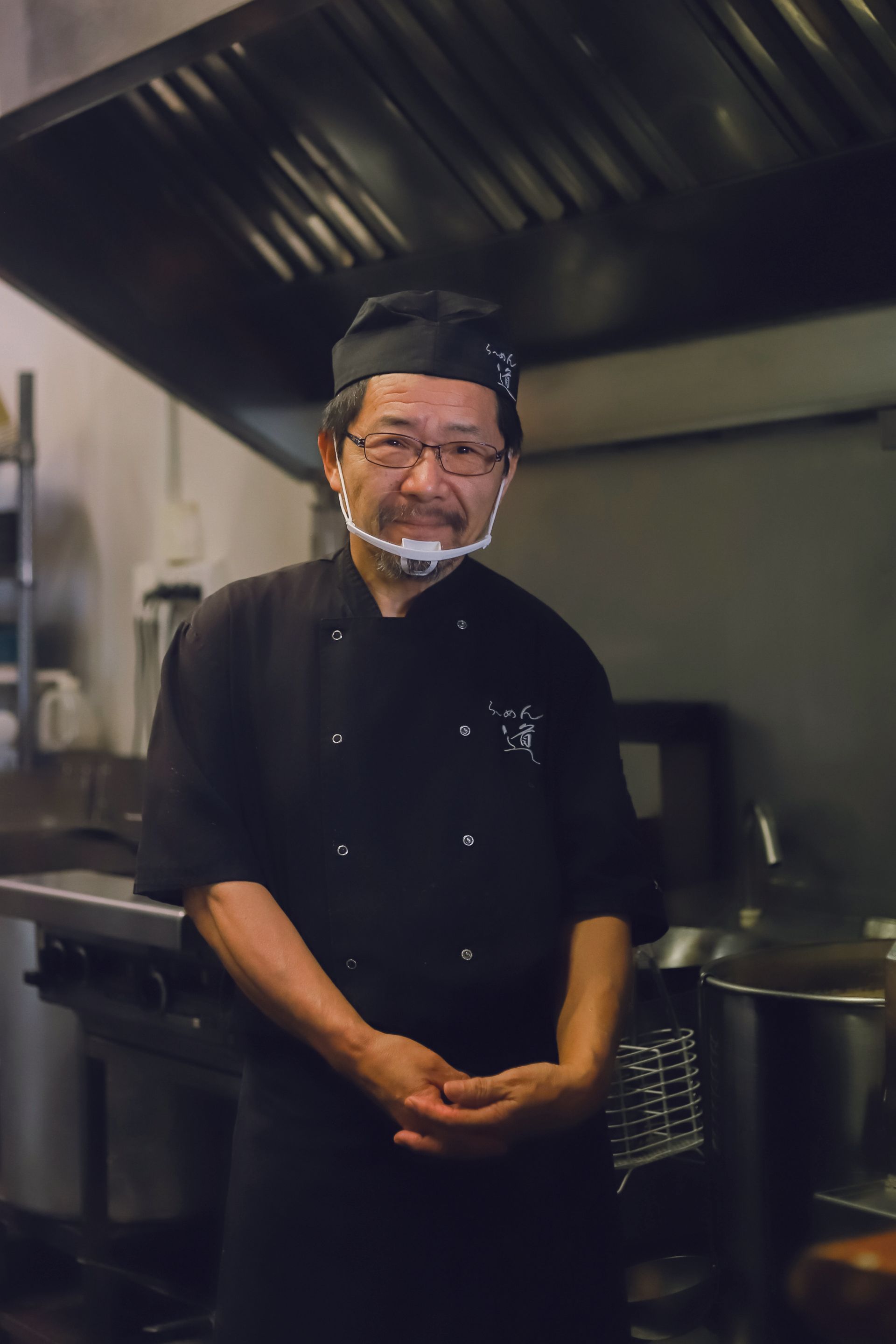
Everybody Loves Ramen
Words: Anna King Shahab
Hidenobu Tanimukai is a stirrer. Keeping an eye on the pot is something he does day and night: he and his wife Eriko live above Ramen Do, the restaurant they own on Symonds Street, enabling Hidenobu to “go downstairs to stir the pot now and then”, Eriko explains. This is rather handy, given each batch of broth needs to cook for around 24 hours until the chef is content.
Hidenobu cooks up two batches each week for the restaurant, which is open Thursday to Saturday. The hero broth here is a tonkotsu style, which utilises 15kg of bones in each cook – pork bones and trotters, chicken frames, pork mince and pork fat – as well as a host of vegetables and ginger. It’s cooked until the minerals in the bones turn the liquid milky white. The tonkotsu broth forms the base of most of the soup items on the menu, including the restaurant’s signature dish, miso ramen. It’s hard work, and Hidenobu has been doing it at Ramen Do for 11 years. Prior to that, in his and Eriko’s home town of Sapporo, he trained at a famous ramen shop called Teshikaga; all up, he’s been working as a chef for 30 years.
Sapporo, the capital of Hokkaido prefecture in northern Japan, is the home of miso ramen. A ski town, Sapporo freezes over in winter, and the addition of miso paste to the ramen amps up its umami and thickness, making it extra hearty and perfect for quelling the appetite in cooler climes. Another ingredient that enriches Hidenobu’s miso ramen is the type of kombu he uses – the couple’s families send
over rausu-kombu, an expensive dried seaweed that lends a special fragrance, flavour and mineral hit to the broth.
Hidenobu also makes all Ramen Do’s noodles. (A note on the word ramen – it’s the name for the noodles, but also for the soup the noodles feature in, so when referring to the noodles, “ramen noodles” is a common tautology: it’s just ramen.) It’s an exacting process. The dough uses lots of eggs and flour and just the right amount of kansui – an alkaline agent akin to baking soda. After slicing the noodles, Hidenobu ages them “for around three days or so, depending on the weather”, says Eriko, and the ageing process and the kansui give Hidenobu’s ramen the all-important springiness in texture.
The noodles are also Hokkaido style – you’ll notice the difference if you eat at different ramen shops around the city. “Hokkaido ramen are yellow in colour and crinkly,” says Eriko. A little-known fact is that the couple sell individual portions of noodles for customers keen to cook with them at home. That’s a nice idea, but take it from me, it’s a far better idea to book into Ramen Do and work your way through the menu. Start with the signature miso ramen and consider as you slurp the hours of work Hidenobu has put into that one bowl of soup. Try the chicken paitan ramen – the poultry cousin to tonkotsu and, like the best kind of chicken soups, a panacea for all ills. Venture onto tsukumen, where the noodles come separately to dip into broth. And in spring or summer, don’t miss the hiyashi chuka – a wonderful dish of chilled noodles with an array of colourful toppings. Order a Kirin lager, or the popular Japanese soft drink Ramune, and the experience is complete.
There’s a homely feel to Ramen Do; its comfy decor and Eriko’s beautiful cross-stitch artwork amplify the nourishment of the food, although they somewhat belie the grit that goes into the restaurant. Also on the wall is a framed sheet of Japanese calligraphy with a phrase that translates, as Eriko explains, to something like “Never stop progressing, never stop getting better and better at making ramen”, a sentiment the couple clearly live by, and which shows in their delicious efforts.

